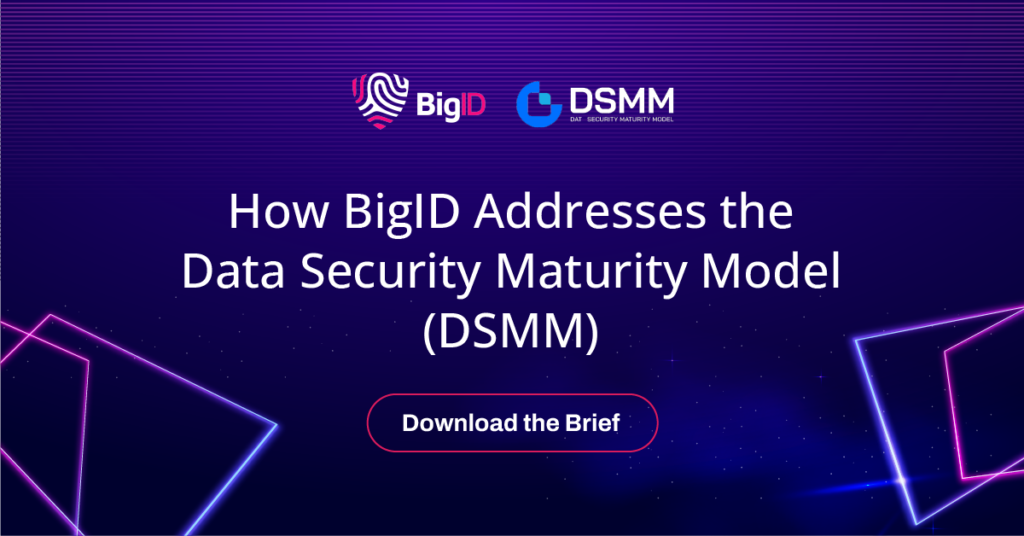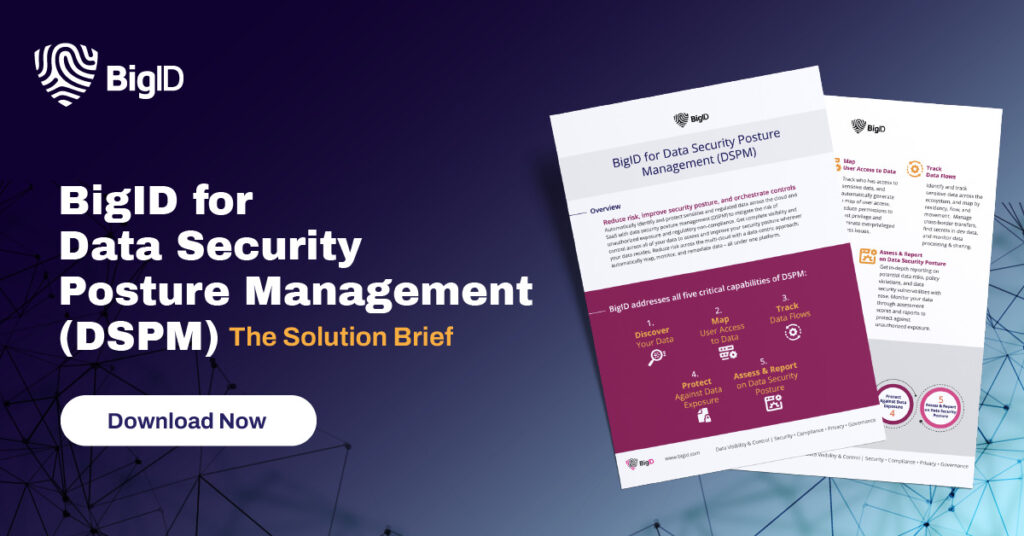Today’s organizations often find themselves navigating a vast sea of digital data— where information is both a lifeline and a potential hazard. In this ever-evolving landscape, the Data Security Maturity Model (DSMM) emerges as a guiding star. In this article, we unravel the layers of DSMM, uncovering how it empowers businesses to fortify their defenses, scale their security, and thrive in the era of data-driven opportunities.
What is the data security maturity model (DSMM)?
The Data Security Maturity Model (DSMM) is a framework that gauges an organization’s level of data security preparedness and capability. It helps assess how well an organization manages and protects its data, providing a roadmap for improving data security practices over time.
Why is the DSMM important?
The Data Security Maturity Model (DSMM) holds significant importance for businesses due to several reasons:
- Assessment and Improvement: DSMM allows businesses to assess their current data security practices and determine their level of maturity. This assessment helps identify strengths and weaknesses, providing a roadmap for continuous improvement.
- Risk Management: By understanding their data security maturity, businesses can effectively manage risks associated with data breaches, regulatory non-compliance, and potential financial and reputational damage.
- Regulatory Compliance: DSMM aids in aligning data security practices with regulatory requirements. This is crucial, as non-compliance can result in severe penalties and legal consequences.
- Resource Allocation: DSMM helps allocate resources more effectively by focusing efforts on areas that require enhancement, thereby avoiding wastage of resources on redundant or less critical aspects.
- Strategic Planning: Data security is a critical aspect of business strategy. DSMM insights guide businesses in formulating strategic plans that address data security challenges and align with long-term goals.

Levels of data security maturity
The Data Security Maturity Model (DSMM) framework is a structured way to measure and improve an organization’s data security practices over time. It consists of several stages, each representing a level of data security maturity. The framework helps businesses assess their current state, set goals, and take steps to enhance their data security.
The levels typically include:
- Initial/Ad Hoc: Data security practices are unstructured and inconsistent. There’s minimal awareness of risks or regulatory requirements.
- Defined: Basic data security policies and processes are established. There’s a growing understanding of risks, and some controls are implemented.
- Managed: Data security practices are more organized and proactive. There’s a focus on risk assessment, compliance, and continuous improvement.
- Measurable: Data security efforts are quantified and monitored. Metrics are used to track and improve security effectiveness.
- Optimized: Data security is fully integrated into the organization’s culture and processes. Continuous improvement is a priority, and innovative solutions are adopted.
Success within the DSMM framework is achieved when an organization progresses from lower maturity levels to higher ones. It involves:
- Enhanced Security: As maturity increases, data security practices become more robust, effectively protecting sensitive information from breaches and unauthorized access.
- Risk Reduction: Successful progress through the levels leads to better identification and mitigation of data security risks, minimizing potential damage.
- Compliance: Organizations at higher maturity levels are more likely to comply with relevant data protection regulations, avoiding legal and financial repercussions.
- Efficiency: A higher level of maturity allows for more efficient allocation of resources, as security efforts are better targeted and aligned with business goals.
- Reputation: Improved data security boosts an organization’s reputation and instills trust among customers, partners, and stakeholders.
- Innovation: Organizations that reach the highest maturity levels often adopt innovative security solutions and stay ahead of emerging threats.

Uncovering DSMM challenges
Challenges associated with DSMM implementation in business include:
- Complexity: Assessing and improving data security maturity involves understanding intricate technical and procedural aspects, which can be complex and require specialized knowledge.
- Resistance to Change: Implementing changes to enhance data security practices might face resistance from employees accustomed to existing workflows and processes.
- Resource Constraints: Upgrading data security practices may require investments in technology, training, and personnel, posing financial and resource challenges for some businesses.
- Lack of Awareness: Some businesses might not fully comprehend the importance of data security or the potential risks they face, leading to an inadequate emphasis on DSMM.
- Scalability: Adapting data security practices to the evolving nature of threats and business growth can be challenging, especially for rapidly expanding enterprises.
Overall, despite these challenges, DSMM serves as a vital tool for businesses striving to safeguard their data, ensure compliance, and maintain their reputation in an increasingly digital and interconnected world.
Common DSMM mistakes to avoid
Navigating the Data Security Maturity Model (DSMM) can be challenging, and organizations often encounter these common mistakes in their approach:
- Lack of Alignment with Business Goals: Failing to align data security efforts with the organization’s overall objectives can lead to ineffective resource allocation and a disjointed approach.
- Ignoring Culture and Awareness: Neglecting to foster a culture of data security and provide regular training to employees can undermine even the most advanced security measures.
- Skipping Foundational Steps: Attempting to jump to higher DSMM levels without first establishing basic security practices, such as data discovery and classification, can lead to weak foundations.
- Overlooking Data Governance: Neglecting data governance practices like clear ownership, access controls, and lifecycle management can result in disorganized and insecure data environments.
- Underestimating Vendor Relationships: Relying solely on vendors to secure data without a comprehensive understanding of their practices can introduce vulnerabilities.
- Neglecting Regular Assessments: Failing to conduct periodic assessments and updates of data security practices can lead to outdated strategies that do not address evolving threats.
- Overemphasis on Technology: Relying solely on technology solutions without addressing people and processes can create a false sense of security and hinder overall progress.
- Incomplete Risk Assessment: Not considering all possible risks, including insider threats and human errors, can leave blind spots in the security strategy.
- Ignoring Regulatory Changes: Neglecting to stay updated with evolving data protection regulations can result in non-compliance and legal consequences.
- Lack of Senior Management Support: Without strong leadership buy-in, data security initiatives may lack necessary resources and priority.
- Treating DSMM as a One-Time Effort: Viewing DSMM as a single project rather than an ongoing journey can hinder continuous improvement and adaptation.
- Disregarding User Experience: Implementing overly complex security measures that impede user productivity can lead to workarounds and decreased security.
- Poor Communication: Failing to communicate data security practices and expectations clearly across the organization can lead to misunderstandings and gaps in implementation.
Leveraging BigID in Data Security
BigID is the industry leading DSPM platform for privacy, security, and governance. BigID uses advanced ML and AI to automatically and accurately scan, identify, and classify structured and unstructured data at scale. In the cloud and on premise, BigID’s flexible solutions empower organizations to achieve their data security goals and succeed within the Data Security Maturity Model (DSMM) framework through the following ways:
- Data Discovery and Classification: BigID offers deep data discovery that scans and categorizes data across the organization— providing a comprehensive view of sensitive information. This is crucial for moving from lower DSMM levels to higher ones, as data classification is foundational for effective security.
- Risk Assessment and Prioritization: BigID’s Security Suite has an array of tools that can identify high-risk data areas and take action to remediate and revoke over privileged access so organizations focus their efforts on securing the most critical information. This aligns with DSMM’s maturity progression by moving from ad hoc practices to proactive risk management.
- Automated Compliance: BigID’s Privacy Suite aids in regulatory compliance by identifying data subjects to various regulations (e.g., GDPR, HIPAA). It facilitates DSMM advancement by ensuring compliance, a key aspect of higher maturity levels.
For data security that goes beyond the surface level— get a free 1:1 demo with our experts today.


